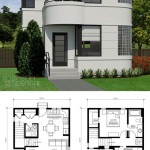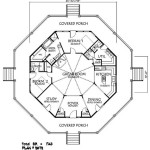Coastal beach house plans are meticulously designed blueprints that provide a comprehensive guide for the construction of homes specifically suited for coastal environments. These plans encompass all the necessary architectural details, including floor layouts, exterior designs, and structural specifications, ensuring that the resulting structure meets the unique challenges and opportunities presented by beachfront living.
Coastal beach houses are designed to withstand the harsh conditions often associated with coastal areas, including strong winds, salt spray, and fluctuating temperatures. They often incorporate design features such as elevated foundations to protect against flooding, durable exterior materials like fiber cement or HardiePlank siding, and energy-efficient windows and doors to minimize heat loss and maximize natural light.
Now that we have a better understanding of coastal beach house plans and their distinctive characteristics, let’s delve into the main body of this article, where we will explore various aspects of these plans, including popular architectural styles, practical considerations, and tips for choosing the perfect plan for your dream coastal abode.
When considering coastal beach house plans, there are several key points to keep in mind:
- Elevated foundations
- Durable exterior materials
- Energy-efficient windows and doors
- Open floor plans
- Large windows
- Outdoor living spaces
- Flood insurance
- Zoning restrictions
- Professional design
These factors will help ensure that your coastal beach house is both beautiful and functional, providing you with years of enjoyment.
Elevated foundations
Elevated foundations are an essential feature of coastal beach house plans. They raise the house above the ground, protecting it from flooding and other hazards associated with coastal living.
There are several different types of elevated foundations that can be used for coastal beach houses. The most common type is a pile foundation. Pile foundations consist of long, slender columns that are driven into the ground until they reach a stable layer of soil or rock. The house is then built on top of the piles.
Another type of elevated foundation is a pier foundation. Pier foundations are similar to pile foundations, but they are typically made of concrete or steel. Pier foundations are often used in areas where the soil is not stable enough to support a pile foundation.
The height of the elevated foundation will vary depending on the flood risk in the area. In areas with a high risk of flooding, the foundation may be elevated several feet above the ground. In areas with a lower risk of flooding, the foundation may only be elevated a few inches.
Elevated foundations can add significant cost to the construction of a coastal beach house. However, they are an important investment that can protect your home from damage and ensure your safety.
Durable exterior materials
Coastal beach houses are exposed to a variety of harsh conditions, including strong winds, salt spray, and UV radiation. As such, it is important to use durable exterior materials that can withstand these elements and protect the home from damage.
There are a variety of durable exterior materials available for coastal beach houses. Some of the most popular options include:
- Fiber cement siding
- HardiePlank siding
- Vinyl siding
- Stucco
- Stone
- Brick
Fiber cement siding is a popular choice for coastal beach houses because it is resistant to moisture, fire, and insects. It is also relatively easy to install and maintain.
HardiePlank siding is another good option for coastal beach houses. It is made of fiber cement, but it has a wood-like appearance. HardiePlank siding is more expensive than fiber cement siding, but it is also more durable.
Vinyl siding is a less expensive option for coastal beach houses. It is made of PVC, which is a durable and moisture-resistant material. Vinyl siding is also easy to install and maintain.
Stucco is a traditional exterior material for coastal beach houses. It is made of a mixture of cement, sand, and lime. Stucco is durable and fire-resistant, but it can be expensive to install and maintain.
Stone and brick are also durable exterior materials for coastal beach houses. However, they are more expensive than other options, and they can be difficult to install and maintain.
When choosing an exterior material for your coastal beach house, it is important to consider the following factors:
- The climate in your area
- The budget for your project
- The style of your home
- The maintenance requirements for the material
By carefully considering all of these factors, you can choose the perfect exterior material for your coastal beach house.
Energy-efficient windows and doors
Energy-efficient windows and doors are an important part of any coastal beach house plan. They can help to reduce energy costs, improve comfort, and protect the home from the elements.
- Reduce energy costs
Energy-efficient windows and doors can help to reduce energy costs by keeping the home cooler in the summer and warmer in the winter. This is because they are designed to minimize heat transfer, which can account for a significant portion of a home’s energy use.
- Improve comfort
Energy-efficient windows and doors can also improve comfort by reducing drafts and creating a more even temperature throughout the home. This can be especially important in coastal areas, where the weather can be unpredictable.
- Protect the home from the elements
Energy-efficient windows and doors can also help to protect the home from the elements. They are designed to withstand strong winds, rain, and salt spray, which can damage ordinary windows and doors.
- Increase the value of the home
Energy-efficient windows and doors can also increase the value of the home. This is because they are seen as a desirable feature by potential buyers, who are increasingly looking for homes that are energy-efficient and environmentally friendly.
When choosing energy-efficient windows and doors for your coastal beach house, there are several factors to consider, including:
- The climate in your area
- The budget for your project
- The style of your home
- The maintenance requirements for the windows and doors
By carefully considering all of these factors, you can choose the perfect energy-efficient windows and doors for your coastal beach house.
Open floor plans
Open floor plans are a popular feature of coastal beach house plans. They create a spacious and inviting living environment that is perfect for entertaining guests or simply enjoying the views of the beach.
Open floor plans typically combine the living room, dining room, and kitchen into one large space. This creates a sense of flow and continuity that makes the home feel larger and more open. Open floor plans also allow for more natural light to enter the home, which can help to create a bright and airy atmosphere.
There are many advantages to open floor plans. They can make the home feel more spacious and inviting, they can improve the flow of traffic, and they can make it easier to entertain guests. Open floor plans can also be more energy-efficient, as they allow for better air circulation.
However, there are also some disadvantages to open floor plans. They can make it more difficult to define different areas of the home, they can be more noisy, and they can be less private. Open floor plans can also be more challenging to decorate, as there are fewer walls to break up the space.
Overall, open floor plans are a popular choice for coastal beach house plans. They can create a spacious and inviting living environment that is perfect for entertaining guests or simply enjoying the views of the beach.
Large windows
Large windows are another popular feature of coastal beach house plans. They offer a number of benefits, including:
- Stunning views
Large windows allow you to enjoy stunning views of the beach and ocean from the comfort of your home. This can be especially enjoyable during storms, when you can watch the waves crash against the shore from the safety of your living room.
- Natural light
Large windows also allow for more natural light to enter the home. This can help to create a bright and airy atmosphere, which is perfect for coastal living. Natural light can also help to improve your mood and boost your energy levels.
- Indoor-outdoor connection
Large windows can help to create a stronger connection between the indoors and outdoors. This can be especially beneficial in coastal areas, where the weather is often mild enough to enjoy the outdoors year-round. Large windows can make it easy to open up your home to the outdoors and enjoy the fresh air and sunshine.
- Increased value
Large windows can also increase the value of your home. This is because they are seen as a desirable feature by potential buyers, who are increasingly looking for homes that are bright, airy, and have stunning views.
When choosing large windows for your coastal beach house, there are several factors to consider, including:
- The climate in your area
- The budget for your project
- The style of your home
- The maintenance requirements for the windows
By carefully considering all of these factors, you can choose the perfect large windows for your coastal beach house.
Outdoor living spaces
Coastal beach house plans often incorporate outdoor living spaces that allow you to enjoy the beautiful coastal environment. These spaces can take many different forms, such as decks, patios, porches, and screened-in porches.
- Decks
Decks are a popular choice for coastal beach houses because they offer a great way to enjoy the outdoors while still being protected from the elements. Decks can be made from a variety of materials, such as wood, composite, or PVC. They can also be covered with a roof or awning to provide additional protection from the sun and rain.
- Patios
Patios are another popular choice for coastal beach houses. They are typically made of concrete or pavers, and they can be either covered or uncovered. Patios are a great place to relax and entertain guests, and they can also be used for dining or cooking.
- Porches
Porches are a great way to enjoy the outdoors while still being protected from the sun and rain. They can be screened in to keep out insects, or they can be left open to allow for a more natural breeze. Porches are a great place to relax and read a book, or to simply enjoy the views of the beach.
- Screened-in porches
Screened-in porches are a great way to enjoy the outdoors without having to worry about insects. They are typically made of a lightweight frame with a mesh screen, and they can be attached to the house or built as a stand-alone structure. Screened-in porches are a great place to relax and entertain guests, and they can also be used for dining or sleeping.
When choosing an outdoor living space for your coastal beach house, there are several factors to consider, including:
- The climate in your area
- The budget for your project
- The style of your home
- The size of your yard
- Your personal preferences
By carefully considering all of these factors, you can choose the perfect outdoor living space for your coastal beach house.
Flood insurance
Flood insurance is an important consideration for anyone living in a coastal area. Coastal beach houses are particularly vulnerable to flooding, as they are often located in low-lying areas that are prone to storm surges and other flooding events.
- Flood insurance can protect your home from financial damage in the event of a flood.
Flood insurance covers the cost of repairing or replacing your home and belongings if they are damaged by a flood. This can be a significant financial lifesaver, as the cost of flood damage can be very high.
- Flood insurance is required by most mortgage lenders for homes located in high-risk flood zones.
If you are planning to finance your coastal beach house, you will likely be required to purchase flood insurance. This is because lenders want to protect their investment in the event of a flood.
- Flood insurance rates are based on a number of factors, including the location of your home, the elevation of your home, and the amount of coverage you choose.
The cost of flood insurance can vary significantly depending on these factors. It is important to shop around and compare rates from different insurance companies to find the best deal.
- Flood insurance is a valuable investment for anyone living in a coastal area.
It can provide you with peace of mind knowing that your home and belongings are protected in the event of a flood.
If you are considering purchasing a coastal beach house, it is important to factor the cost of flood insurance into your budget. Flood insurance can provide you with peace of mind and financial protection in the event of a flood.
Zoning restrictions
Zoning restrictions are regulations that govern the use of land and buildings in a particular area. These restrictions are typically put in place by local governments to ensure that land is used in a way that is compatible with the surrounding community. Zoning restrictions can impact coastal beach house plans in a number of ways.
One of the most common zoning restrictions that affects coastal beach houses is the setback requirement. A setback is the minimum distance that a building must be set back from the property line. Setback requirements are designed to protect public access to the beach and to ensure that buildings are not damaged by storms. The setback requirement can vary depending on the location of the property and the zoning district in which it is located.
Another common zoning restriction that affects coastal beach houses is the height. Height restrictions are designed to protect views and to ensure that buildings do not block sunlight from neighboring properties. The height restriction can vary depending on the location of the property and the zoning district in which it is located.
In addition to setback and height restrictions, zoning restrictions can also regulate the type of uses that are allowed in a particular area. For example, some zoning districts may only allow residential uses, while others may allow a mix of residential and commercial uses. It is important to check the zoning regulations for the area in which you are planning to build to ensure that your plans are compliant.
Zoning restrictions can be complex and vary from one jurisdiction to another. It is important to consult with a local zoning official or a land use attorney to determine how zoning restrictions will impact your coastal beach house plans.
Professional design
Hiring a professional designer to create your coastal beach house plans is a wise investment. A professional designer will have the knowledge and experience to create a plan that meets your specific needs and requirements, while also complying with all applicable building codes and zoning regulations.
- A professional designer can help you create a custom floor plan that meets your specific needs and lifestyle.
A professional designer will take the time to get to know you and your family, and to understand your needs and lifestyle. They will then create a floor plan that is tailored to your specific requirements, ensuring that your coastal beach house is a perfect fit for you and your family.
- A professional designer can help you choose the right materials and finishes for your coastal beach house.
Choosing the right materials and finishes for your coastal beach house is essential to ensuring that your home is durable and withstands the harsh coastal environment. A professional designer will have the knowledge and experience to help you choose the right materials and finishes for your specific needs and budget.
- A professional designer can help you create a coastal beach house that is both beautiful and functional.
A professional designer will work with you to create a coastal beach house that is both beautiful and functional. They will help you choose the right colors, textures, and furnishings to create a home that is both stylish and comfortable.
- A professional designer can help you save time and money on your coastal beach house project.
Hiring a professional designer can actually save you time and money on your coastal beach house project. A professional designer will be able to help you avoid costly mistakes and delays, and they will be able to get your project completed on time and within budget.
If you are planning to build a coastal beach house, hiring a professional designer is a wise investment. A professional designer will be able to help you create a custom floor plan that meets your specific needs and requirements, while also complying with all applicable building codes and zoning regulations. A professional designer can also help you choose the right materials and finishes for your coastal beach house, and they can help you create a home that is both beautiful and functional.










Related Posts








